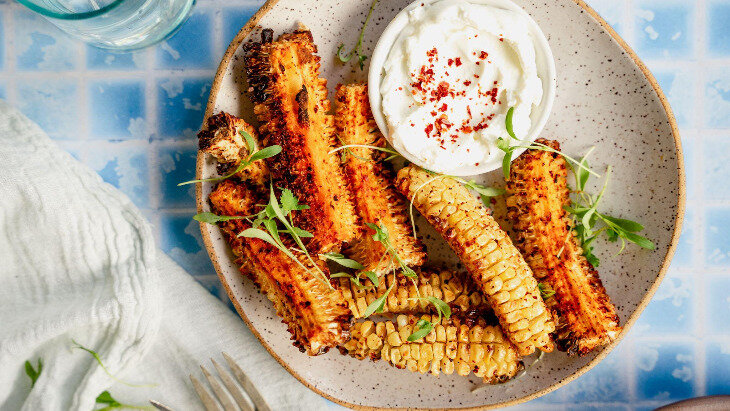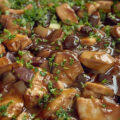The look of shock I usually receive from falafel makers when they see my ultra-Ashkenazi complexion asking for “more charif (spice), please” is always a satisfying one. I've always been a fan of spice, even though my heritage might belie that.
Whether on a sabich, a filet of fish, shakshuka, or couscous, the flavors of harissa permeate throughout all the best North African Jewish fare. The garlicky, spicy, and fruity taste of the dip is served alongside practically everything in North Africa.
In a word, Harissa is the Jewish Tabasco or Sriracha or spicy ketchup. It's the hot sauce that we keep in our cabinet for when disaster strikes or for when you're invited to an Ashkenazi shabbat dinner where the hosts forget that salt and pepper aren't the only two spices.
Harissa originated from the Barbary Coast of North Africa but quickly spread to the rest of the Maghreb. Harissa comes from the Arabic word “Harasa” which means “to crush” referring to the process of making this spread. Making Harissa authentically requires Tunisian Baklouti – a subtly sweet, fruity, and spicy chili pepper. By combining this pepper with garlic, lemon, herbs, and spices (in Tunisian kitchens, caraway is commonly added, while Moroccans prefer cumin) you get a flavorful condiment that can be a lifesaver in the kitchen.
This brings us to another point of contention between Moroccans and Tunisians - how to use harissa. In Tunisian cuisine, Harissa is used frequently in dips like hummus or tahini or to marinate meat or fish. Harissa also manages to add depth and complexity to slow-cooked dishes, such as tagines, Adafinas, and Tunisian Fricassee.
In Tunisian cuisine the common way of using harissa is by incorporating it into the dish, as one would any other seasoning or curry paste. However, Moroccans take a different approach to the spread. They prefer to leave it on the side of stews and meats to let the consumer decide how spicy they like their food.
Harissa is one of the many reasons Moroccan and Tunisian food is often complimented for its use of spices and strong flavors. Peppers also work as a stimulant, raising body temperature and making us even hungrier.
When using Harissa in your dishes, beware of the intense flavor it provides. Even the Jewish Food historian Gil Marks makes sure to note that “Harissa should be used sparingly by the faint-hearted.”
Here are a few incredible recipes with Harissa that will totally sell you on having it in your kitchen.
Harissa Corn Ribs

If you’ve ever craved all the delicious smokiness of BBQ ribs without the meat, these corn ribs are perfect for you. The harissa compliments the sweetness of the corn giving the dish a complex and robust flavor profile, immaculately blending North African flavors with a midwestern classic.
Harissa Honey Grilled Salmon

Sweet and spicy is a combination that’s been around for decades. But never has it tasted THIS good! This salmon dish is prepared much the same way it would be in Jewish homes in Morocco with a delectable honey twist for those of you who worry about their spice tolerance.
Spicy Harissa Eggplant Pie

This pie will most certainly be nothing like any pies you’ve had before. The spiciness from the Harissa and eggplant provide the base for the dish but the insane amount of nutrients in here will shock you. The lentils, sweet potato and crumbled feta on top give this dish the extra pizzazz needed to wow at your next dinner party.
Roasted Harissa Cauliflower

One of my personal favorite discoveries of the past year has been the star power of cauliflower. This roasted cauliflower dish over hummus and dukkah is a dish where the veggie is the complete main event and trust me when I say the spicy harissa takes this dish to the next level.
Harissa and Maple Roasted Carrots

Like I said before, sweet and spicy is a combo sent straight from Hashem. The glazed roasted carrots here are colorful, unique, and some of the most flavorful bites you’ll find anywhere.

















